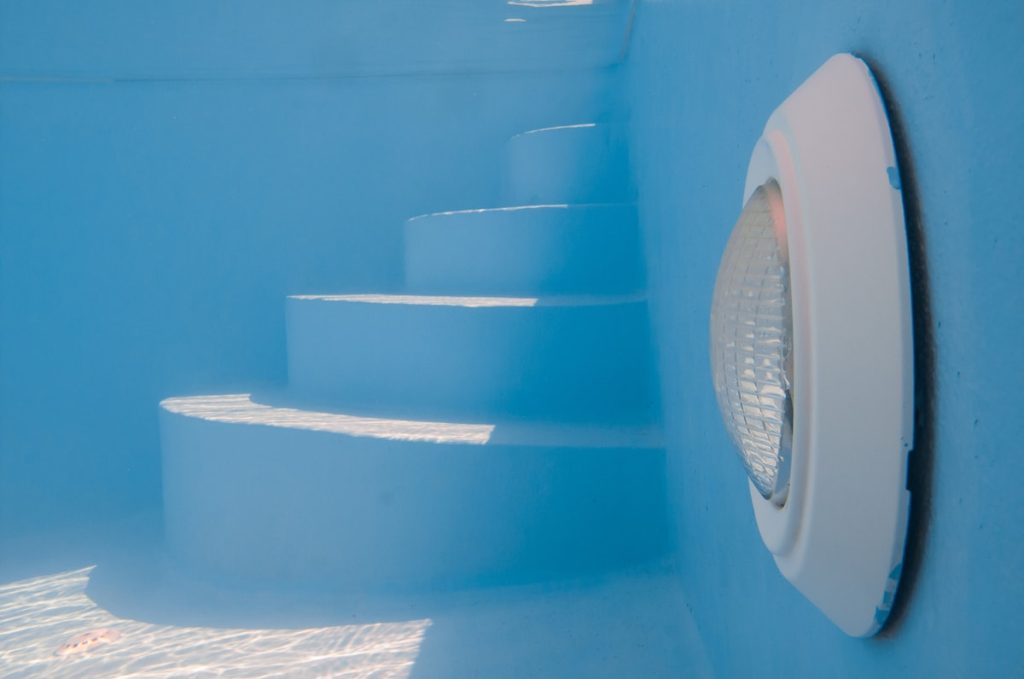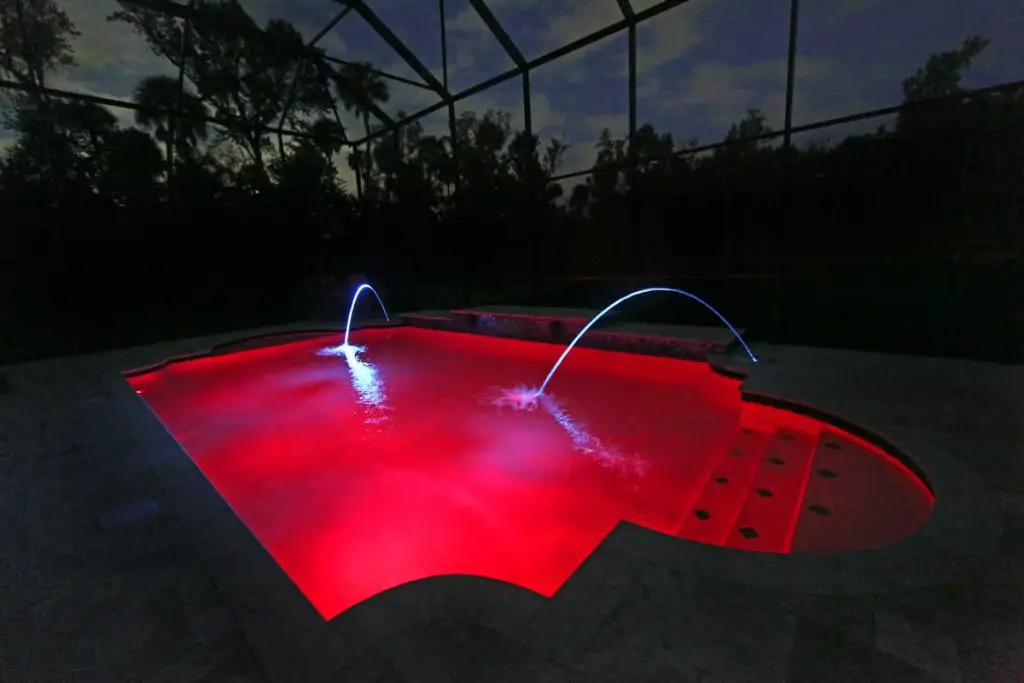If you’re looking into lighting options for your pool, you can’t go wrong with LED lights. But how many LED lights do you need for your specific pool?
You need at least one LED pool light for pools 15′ x 30′ or smaller. Once you exceed 30′, an additional light will be required. For residential pools larger than 40′ and commercial pools, 3 or more lights may be required.
This article will explain the factors that’ll help you determine how many LED lights you need to illuminate your pool. I’ll also talk about what makes LED lights the best choice and how to choose the best one for your pool.

How Many LED Lights Are Necessary for Your Pool?
You need one LED light if your pool is an average size, approximately 15′ x 30′ or smaller. However, pools with unique shapes or specialized functions may have additional requirements. Also, different functions will require different amounts of light.
Here’s an in-depth explanation of the factors that determine the number of lights you need in your pool.
Size of the Pool
The most critical factor in helping you determine the number of lights you need is the size of your pool. If you have too many or too few lights relative to the coverage area of your pool, it can result in safety hazards or make your pool visually unappealing.
According to Inyo Pools, a 15 x 30 foot (4.5 x 9 meters) pool is the maximum size that one LED light can sufficiently illuminate. A 20 x 40 foot (6 x 12 meters) pool will need two LED lights, while anything bigger than 40 feet (6 x 12.8 meters) should have three or more.
Function of the Pool
The purpose of your pool also plays a big part in the number of lights you’ll need. Some functions will require more lights, while others require less. You need to factor in general aesthetics and potential safety hazards as follows.
- Fitness. If you’re using your space solely for fitness, you need to light only the sides of the swimming pool. Too much lighting around the pool can distract you from your workout and cause accidents.
- Daily use. If you use your pool every day, you’ll want to ensure you have the maximum amount of lighting. Pool lighting is essential for safety when you have pets and kids who tend to run around and risk falling into the pool.
- Aesthetics. If your pool is mainly for show, you can get away with less lighting. However, that doesn’t mean you can’t get creative with lighting design and placement.

Why Choose LED Lighting for Your Pool?
There are many options to choose from when it comes to pool lighting. Some of the most popular ones include iridescent, solar, fiber-optic, halogen, and LED. While all of these options are great, LED is (in my humble opinion) the best choice. Here’s what makes LED lighting stand out from the rest:
- Environmentally friendly. If you want to do your part in saving the planet, LED lights should be your go-to. LED bulbs only use around 42 watts of energy to run, making them an incredibly energy-efficient option.
- Cost. While LED lights typically cost more upfront, they’ll save you money in the long run. Because they’re energy-efficient, they produce less heat and don’t burn out as quickly. That means you don’t have to replace them as often as other lighting options.
- Variety. LED lights come in many different colors and styles. If you’re looking to add pizzazz to your pool, I recommend these LOFTEK Floating Pool Lights (available on Amazon.com). They come in four color modes and are rechargeable and waterproof, making them a low-maintenance decor.
- Safety. LED lights are one of the brightest options available. Keeping your pool area well-lit ensures the safety of those who use your pool, especially at night when things become less visible.
- Long-Lasting. LED lights last almost 30 times longer than traditional iridescent lights. Even the cheapest LED light lasts around 5,000 hours. Some of the higher-end LED bulbs have been known to last a whopping 100,000 hours at least — equivalent to a little over 27 years of regular use.
What To Consider When Buying LED Lights for Your Pool
Now that we’ve covered the benefits of LED lights for your pool, it’s time to choose the best one for you. Here are the factors you need to consider.

Color of the Lights
If you’re looking for traditional lighting, you can go with the classic bright white light. If you’re celebrating a special occasion or holiday (e.g., birthdays, Christmas, wedding receptions, BBQ parties), you may want to stock up on different colors of LED lights for these events.
The cool thing is you can pair many LED lights with smartphone apps. That way, you can use your phone as a remote to change your lights’ brightness, tone, or hue.
Color of the Pool
If you have a pool with a light color, nearly every option can work for it. White and colored lights should work fine for a light pool, although you should soften the white lights a bit so the effect won’t blind the viewer. Alternatively, you can choose low-wattage pool lights.
You may need to buy a higher wattage light. That said, most white and colored lights are safe choices. Medium-colored pools also work well with almost any light pairing.
Pools with a dark hue are a little trickier. Dark colors can absorb colored light, especially in deeper parts of the pool. Because of this, it’s better to choose a high-wattage white light if your pool has a dark color.
Conclusion
You’ll most likely need anywhere from one to multiple LED lights for your pool. When choosing lights, it’s important to consider form, function, and personal preference. In the end, it’s all about what keeps your space safe and your pool looking great.
Sources
- Eco Outdoor: The Pros and Cons of LED Pool Lighting
- Energy: LED Lighting
- Hidro Equipos: Tips for Selecting the Best Lighting for Your Swimming Pool
- LEDs Magazine: RAB lighting rates LED products for 100,000 hours of life
- Inyo Pools: How Many Lights Do I Need for My Pool?
- Local Pools and Spas: 7 Great Benefits of Pool Lights
- My Fibreglass Pool Easy: The Benefits of LED Pool Lighting
- Pool Troopers: Swimming Pool Lighting
- The Lightbulb Company: Advantages of LED Lights

